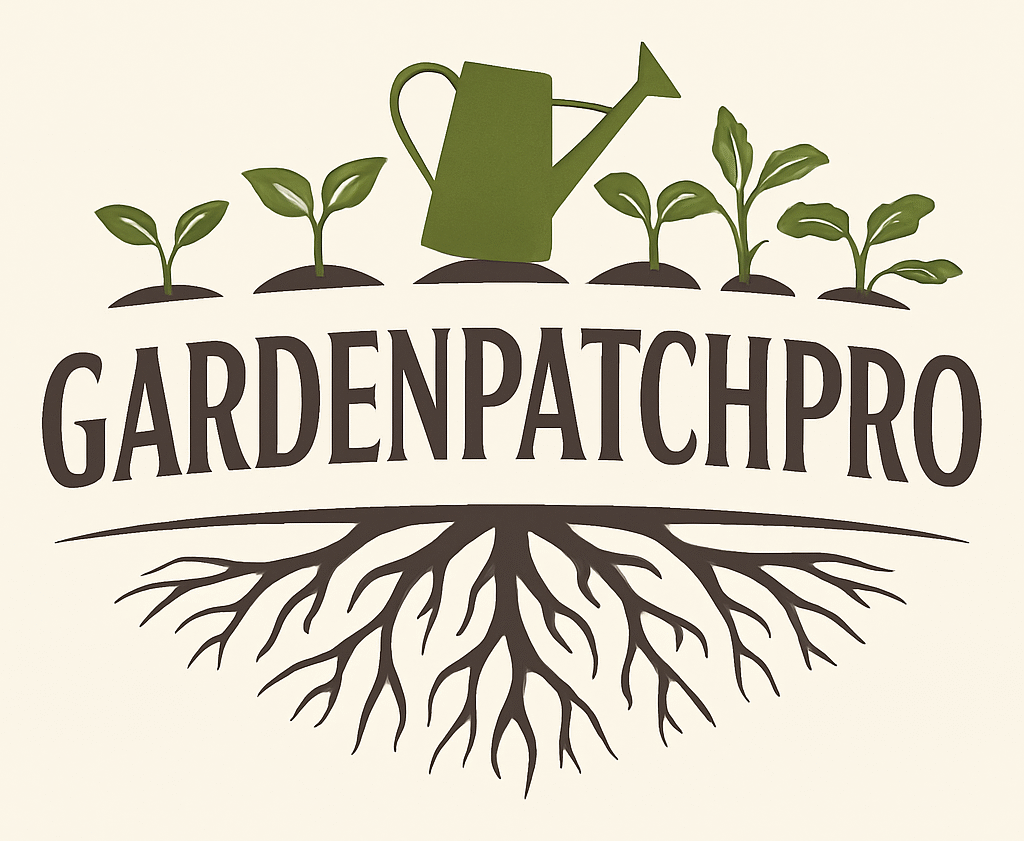5 Gallon Bucket Gardening Made Easy for Small Spaces and Beginners
Gardening with 5-gallon buckets is a practical way to grow plants in small or limited spaces. It offers a simple option for those who do not have access to traditional garden plots. This method uses common buckets as containers to hold soil and plants.
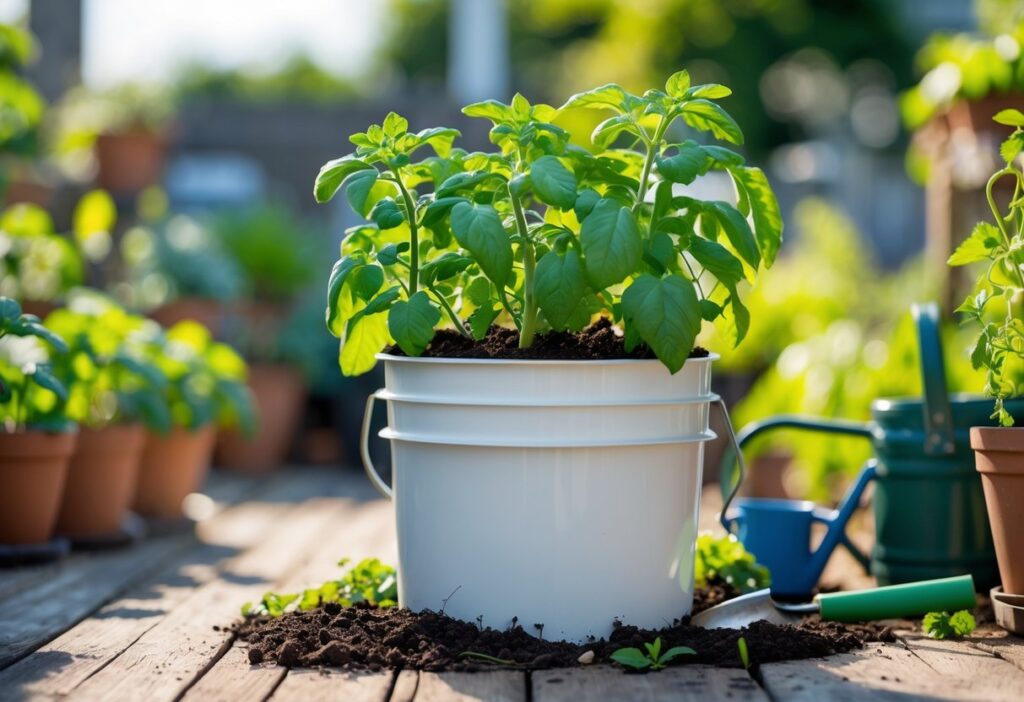
5-gallon bucket gardening allows people to cultivate vegetables, herbs, and flowers without needing a large yard or special equipment. It is a flexible solution for patios, balconies, or indoor spaces. Many find it an accessible way to enjoy homegrown produce and plants.
1) Tomatoes thrive in 5-gallon buckets with proper drainage and full sun exposure.

Tomatoes need plenty of sunlight to grow well. Placing a 5-gallon bucket in a spot that gets at least six to eight hours of full sun daily helps the plants produce healthy fruit.
Proper drainage is essential. Without good drainage, water can pool at the bottom, causing root rot and other problems. Making drainage holes in the bucket ensures excess water escapes and roots stay healthy.
A 5-gallon bucket provides enough space for tomato roots to spread and take in nutrients. This size is suitable for most tomato varieties, giving the plants room to develop without becoming root-bound.
Because buckets are portable, they can be moved to catch the best light or to protect the plants from harsh weather. This flexibility supports steady growth and fruit production.
Using a well-draining soil mix adds to the success of growing tomatoes in buckets. The soil should hold moisture but drain excess water, creating a balanced environment for the roots to thrive.
For detailed guidance on tomato types and care in buckets, visit this complete guide to growing tomatoes in five-gallon buckets.
2) Leafy greens like spinach and lettuce grow quickly in bucket gardens.

Leafy greens such as spinach and lettuce are well suited for growing in 5-gallon buckets. These plants have shallow roots that fit comfortably in the container depth, making bucket gardening an efficient use of space.
They grow fast and can be ready to harvest in about 20 to 30 days. This quick growth helps gardeners enjoy fresh greens regularly without waiting for long periods.
Spinach prefers cooler temperatures and partial shade, which buckets can provide by moving them as needed. Lettuce also grows well in partial shade and benefits from consistent moisture and regular harvesting to encourage new growth.
Many leafy greens can be harvested multiple times using the cut-and-come-again method. Gardeners trim outer leaves, allowing the plant to keep growing, which extends the harvest season in a small space.
Growing spinach, lettuce, and similar greens in buckets is a practical solution for gardeners with limited space or those who want fresh vegetables close at hand. For more detailed growing tips, see how to grow lettuce and spinach in 5-gallon buckets.
3) Peppers develop well in buckets, needing warm temperatures and consistent watering.
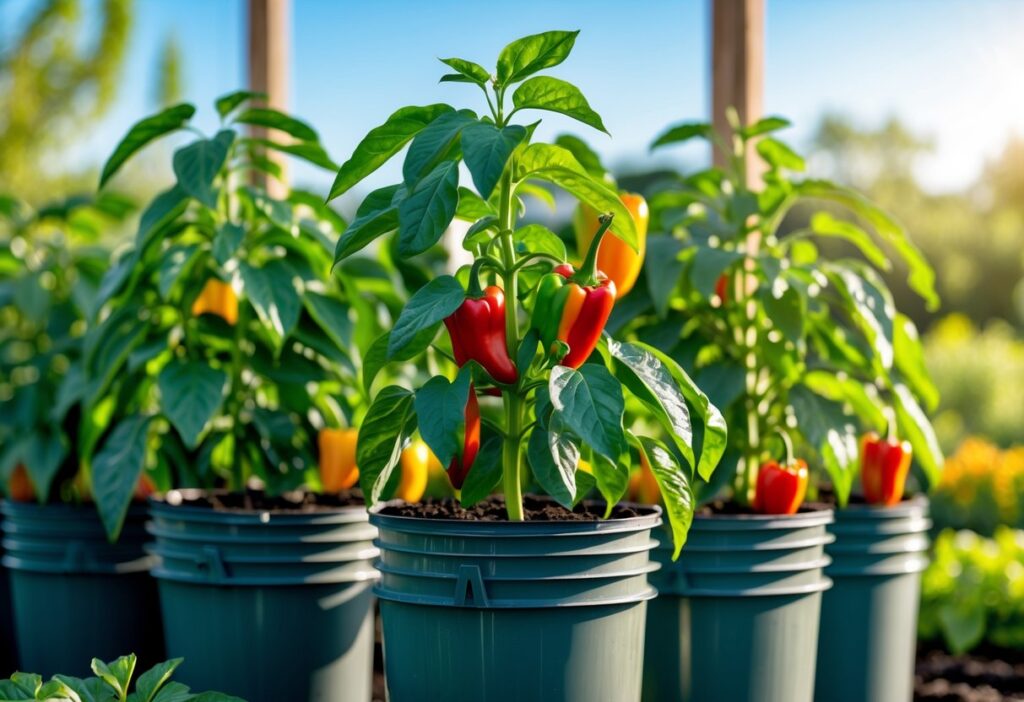
Peppers grow best in warm weather. They need temperatures between 70°F and 85°F to thrive. Cooler temperatures can slow growth and reduce fruit production.
Buckets provide good drainage and space for roots. A 5-gallon bucket is ideal because it gives the plant enough room to grow strong roots. This helps peppers stay healthy and produce more fruit.
Consistent watering is important for peppers in buckets. The soil should stay moist but not soggy. Overwatering can cause root problems, while underwatering leads to stressed plants and smaller peppers.
Bucketing peppers also means they get plenty of sunlight. Peppers need at least six hours of direct sun daily. Placing buckets in sunny spots helps peppers develop fully and produces better yields.
Using containers is a practical way to grow peppers in small spaces. It allows gardeners to control temperature, water, and sunlight easily. More details on growing peppers in 5-gallon buckets can be found in this pepper growing guide.
4) Herbs such as basil and mint easily adapt to container gardening.
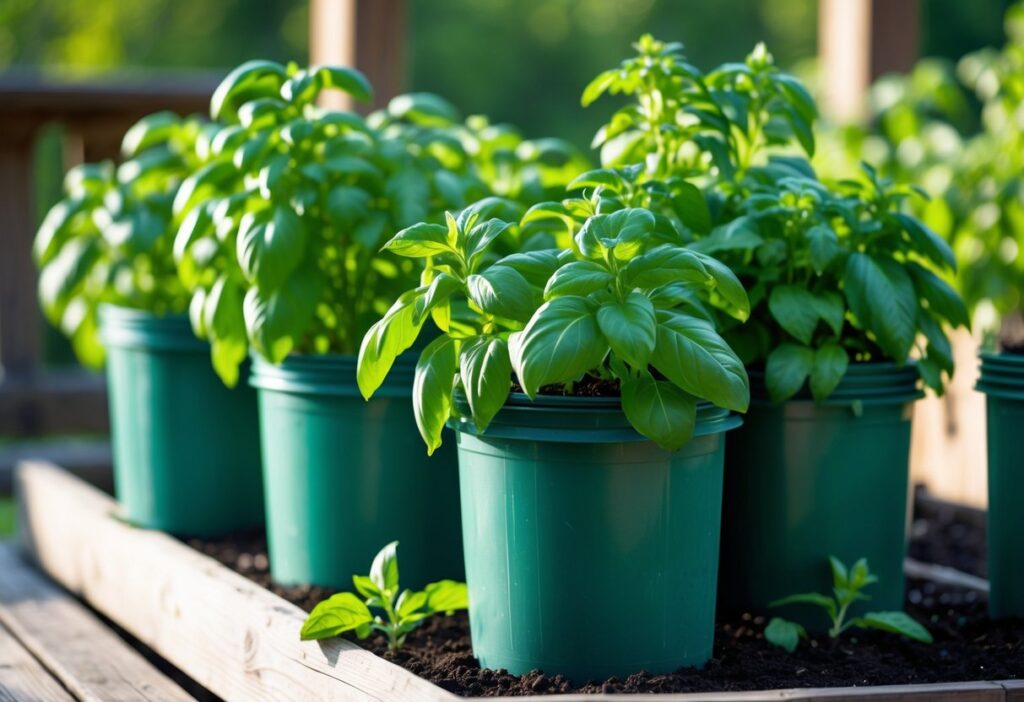
Basil grows well in 5 gallon buckets because it needs good drainage and enough space for roots. It benefits from regular watering and sunlight. Some smaller varieties like ‘Dwarf Greek’ or ‘Spicy Bush’ suit containers better than larger types.
Mint is also a strong candidate for container gardening. It spreads quickly in gardens, but growing it in a bucket helps control its growth. It thrives in well-drained soil and partial sunlight.
Both herbs provide fresh leaves that gardeners can harvest often. They need minimal care if planted properly in containers. Using buckets allows easy movement to catch the best sun or shelter from bad weather.
Growing basil and mint in buckets is a practical way to have fresh herbs on hand without garden space. This method keeps plants healthy and productive throughout the growing season. Learn more about growing herbs in small spaces at 8 top herbs to grow in 5 gallon buckets.
5) Carrots require deep, loose soil in buckets to grow straight roots.
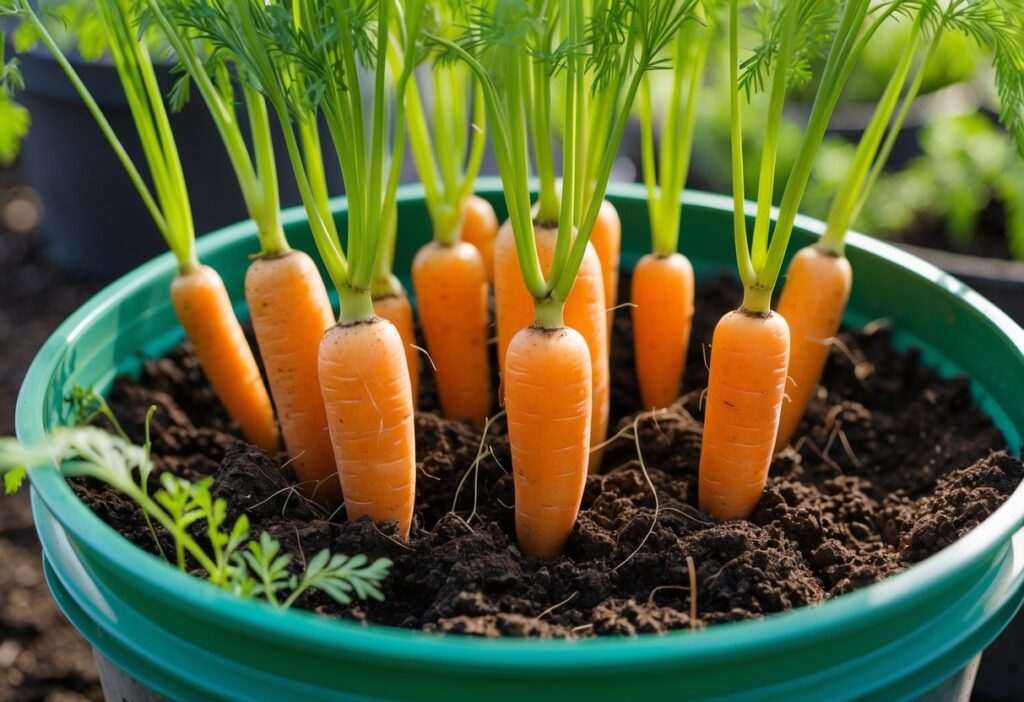
Carrots need soil that is loose and at least 10 to 12 inches deep to develop long, straight roots. If the soil is too shallow or compacted, the roots may become stunted or forked.
Using a deep 5-gallon bucket helps provide enough space for the roots to grow downward without obstruction.
The soil should be loose and free of rocks or clumps. This allows the carrots to grow smoothly and prevents damage to the roots.
Adding a well-draining potting mix designed for vegetables improves soil quality. Mixing in some compost can add nutrients and help keep the soil light.
Proper drainage is essential to avoid waterlogging, which can harm root development. Buckets should have drainage holes to let excess water escape.
Growing carrots in deep, loose soil in buckets helps produce cleaner, straighter, and healthier carrots than growing them in hard or compacted ground. For more detailed tips, see how to grow carrots in buckets effectively.
Optimal Placement and Light Requirements

Proper placement and light exposure are crucial to healthy plants in 5-gallon bucket gardens. Choosing a good spot ensures plants get enough sun while avoiding stress from too much heat.
Selecting the Right Location
Plants in buckets need a stable place that stays safe from strong winds and extreme weather. A flat surface like a patio or balcony works well because it holds buckets steady. Access to water and ease of moving the buckets if needed should be considered.
The location should also have good airflow to prevent mold and pests. Avoid spots that are too close to walls or fences where air can be stagnant. If shadows from buildings or trees cover the buckets for most of the day, plants may not grow well.
Balancing Sunlight and Shade
Most vegetables and flowers require 6 to 8 hours of direct sunlight daily. Too little sun slows growth and reduces fruit or flower production. However, in very hot climates, some afternoon shade helps prevent plants from wilting or leaf burning.
It helps to observe the light patterns during the day before placing buckets. South-facing spots tend to get the most sun. If sun is limited, choose plants that do well with partial shade, such as leafy greens or herbs.
Using movable buckets allows gardeners to adjust plant light exposure as needed. This flexibility is important for balancing sunlight and shade throughout the growing season.
For more details on setting up and maintaining bucket gardens in small spaces, see how to grow a garden in 5 gallon buckets.
Watering Techniques for 5 Gallon Bucket Gardening

Proper watering is essential to keep plants healthy in 5-gallon buckets. It requires managing both water drainage and maintaining steady moisture levels. These two factors help avoid root rot and dehydration.
Improving Drainage
Good drainage prevents water from pooling at the bottom of the bucket, which can cause root damage. Buckets should have several drainage holes drilled in the base. At least 4 to 6 holes, about half an inch wide, are usually enough.
Adding a layer of small rocks or coarse sand at the bottom before soil helps water flow better. It also reduces soil clogging under the bucket holes.
Using high-quality potting soil made for container gardens helps with drainage too. Avoid compacted or heavy soils that hold too much water.
Regularly checking the holes to ensure they’re not blocked by roots or soil is important. If drainage slows, gently clear the holes.
Best Practices for Consistent Moisture
Consistent moisture keeps plants from drying out or becoming too wet. One way is to water deeply but less often. This encourages roots to grow downward.
A simple tool like a moisture meter can help check soil dampness below the surface. Water when the top 1 to 2 inches of soil feels dry.
Using a self-watering system or drip irrigation with a 5-gallon bucket can keep water more even. This reduces the need for daily watering and lessens stress on plants.
Mulching the soil surface inside the bucket also helps retain moisture longer by reducing evaporation. Organic mulches like straw or small wood chips work well.
Frequently Asked Questions
A successful 5-gallon bucket garden needs the right plants, proper soil, and careful watering. Choosing suitable buckets and protecting plants from pests are also important for healthy growth.
What vegetables grow best in a 5-gallon bucket?
Tomatoes grow well when the bucket has good drainage and is placed in full sun. Leafy greens like spinach and lettuce also do well because they grow quickly. Peppers need warm weather and steady watering. Herbs such as basil and mint easily adapt to bucket gardening. Carrots require deep, loose soil to grow straight roots in the bucket.
How do you set up a self-watering system for a 5-gallon bucket garden?
A simple self-watering system uses a water reservoir at the bottom of the bucket. It can be made by adding a wick or a tube that delivers water to the soil slowly. This keeps soil moist without overwatering and saves time on daily watering.
What is the ideal soil mixture for a 5-gallon bucket vegetable garden?
The soil should be loose and well-draining. A mix of potting soil, compost, and perlite or vermiculite works well. This blend retains moisture and nutrients but allows excess water to drain out, preventing root rot.
How often should I water plants in a 5-gallon bucket garden?
Plants in buckets usually need watering more often than those in the ground. Watering every one to three days is common, depending on the weather. It’s important to check soil moisture regularly and water when the top inch feels dry.
Are there any special considerations for choosing a 5-gallon bucket for gardening?
Buckets should have holes drilled in the bottom for drainage. Food-grade plastic buckets are best to avoid chemicals. The bucket color can affect soil temperature—lighter colors keep roots cooler, while dark buckets absorb more heat.
How can I protect my 5-gallon bucket garden from pests and diseases?
Using barriers like netting or sticky traps helps keep pests away. Regularly inspecting plants for signs of bugs or disease is important. Good air circulation around the buckets and avoiding overwatering can prevent many common problems.
For more detailed tips, visit this guide on how to grow a garden in 5-gallon buckets.
